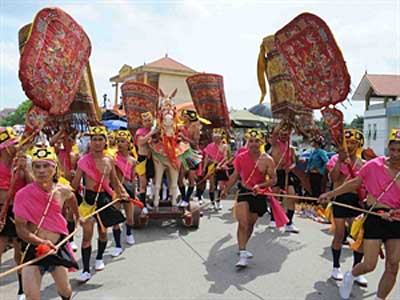Phu Dong Temple in the capital’s Gia Lam district received a certificate recognising it as a special national relic site at a ceremony on May 5.
The place of worship was initially erected by King Hung Vuong VI before being rebuilt in the 11th century by King Ly Thai To, the founder of the Ly dynasty, after he moved the capital city from Hoa Lu-Ninh Binh to Thang Long, present-day Hanoi.

The temple is dedicated to a Vietnamese national saint, Thanh Giong, one of the four immortals in Vietnamese folk belief.
The ceremony was held to kick off the Saint Giong festival, one of the most popular spiritual celebrations in the Red River Delta, which was recognised as part of the intangible cultural heritage of humanity by the UNESCO in 2010.
With various traditional games and art performances, the three-day event promotes the Vietnamese people’s determination to fight foreign invaders for peace and prosperity.
Vice Chairman of the district’s People’s Committee Nguyen Ngoc Thuan said local authorities and people will do their utmost to preserve and promote the temple’s cultural heritage values as well as popularise the festival among both domestic and foreign tourists.
Legend has it that Saint Giong was born to a virgin mother after she put her foot on a giant footprint in a field. However, the boy could not speak, laugh or cry even by the time he was three years old.
Upon hearing the news of an invasion from the North, he persuaded the King to grant him an iron horse, iron lance and iron armour. When the objects were brought to him, the boy turned into a giant and used the weapons to defeat the aggressors to save his country and people. After that he rode his horse to fly up to heaven. These days, he is worshipped as an immortal.
Besides Phu Dong Temple, Hanoi has four other places that have been named as special national relics. They are Hoan Kiem Lake and Ngoc Son temple complex, Tay Dang communal house, and the temples of Hat Mon and the Trung Sisters.